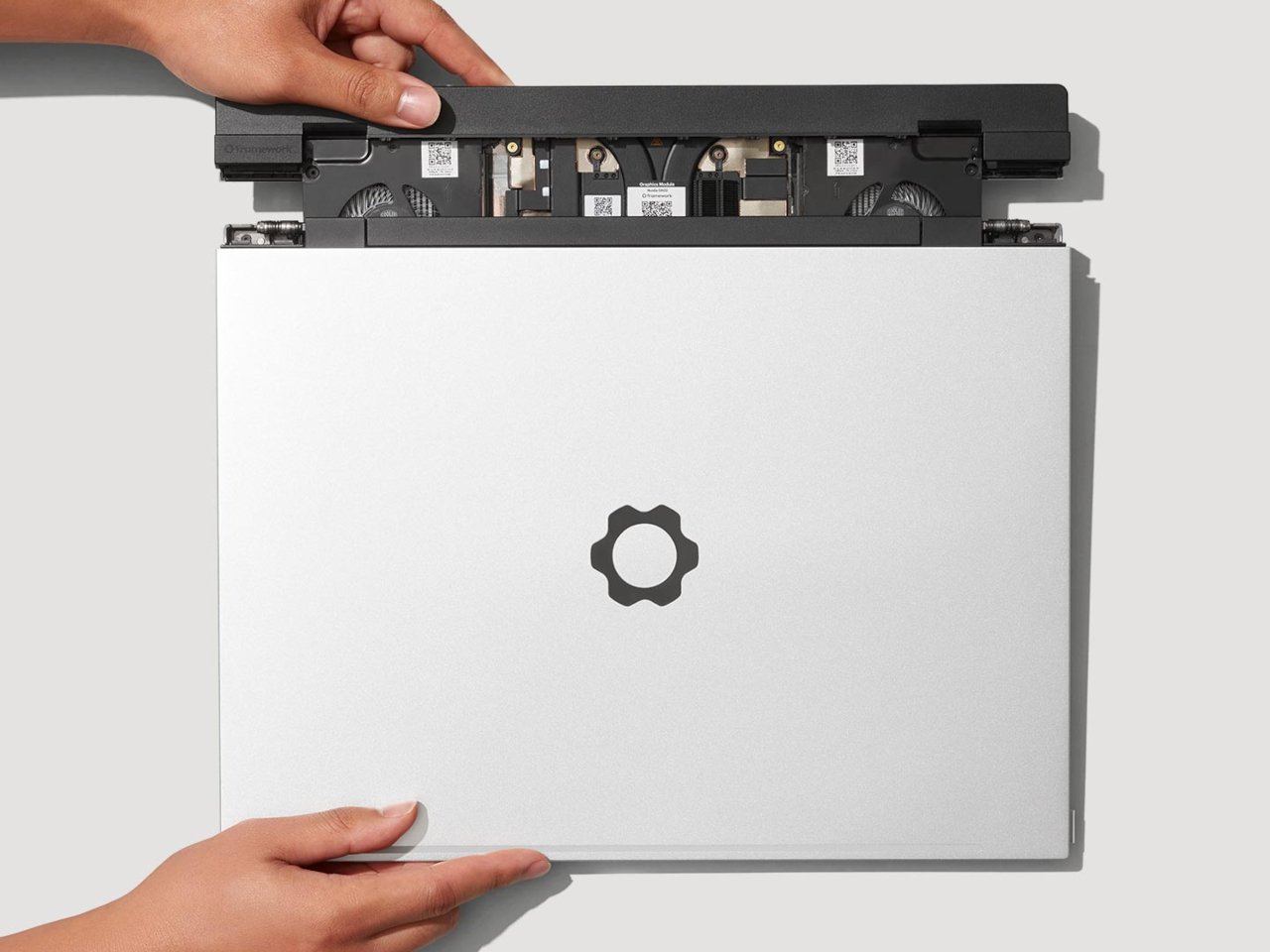The laptop versus desktop debate has raged for decades, hasn’t it? You either get the portability of a laptop with compromised performance and zero upgradability, or you get the raw power and modularity of a desktop that’s permanently chained to your desk. Framework’s new Laptop 16 with upgradable NVIDIA graphics might finally be bridging that gap in a meaningful way.
For years, we’ve been told that truly modular laptops were impossible due to thermal constraints, space limitations, and the complexity of making everything work together reliably. Most manufacturers have settled for minor upgrades like swapping RAM or storage, while the GPU and CPU remain locked in place until you buy an entirely new machine. Framework apparently didn’t get that memo.
Designer: Framework
The star of this latest iteration is the user-swappable NVIDIA GeForce RTX 5070 graphics module, which brings NVIDIA’s latest Blackwell architecture with 8GB of GDDR7 memory to a fully modular form factor. The performance jump is substantial too, delivering 30-40% better gaming framerates compared to the previous Radeon RX 7700S module. More importantly, upgrading requires just six screws and takes about three minutes, making it genuinely accessible for regular users rather than requiring advanced technical skills.
What makes the Framework Laptop 16 particularly compelling is how comprehensive the modularity actually extends beyond just the graphics card upgrade path. The input deck is completely customizable, letting you swap between keyboard modules, numpads, macropads, and spacers depending on your workflow needs. Whether you’re a programmer who wants dedicated macro keys, a gamer who needs a numpad for MMOs, or a minimalist who prefers clean spacing, you can reconfigure the entire layout.
Storage, memory, and even the mainboard itself can be upgraded independently, creating what Framework calls a “laptop for life” philosophy. This level of user control feels almost desktop-like in its flexibility, except you can actually close the lid and take it with you. The thermal system has been revamped to handle the increased power demands, using advanced thermal interface materials and a 240-watt USB-C charger that makes this one of the few gaming laptops powered entirely through USB-C.
That said, we’ve seen ambitious modular laptop projects before, and they haven’t exactly had stellar track records for longevity. Alienware’s Area-51m promised upgradable CPUs and GPUs but quickly abandoned the concept when newer generations didn’t fit the original chassis design. Other manufacturers have tried similar approaches only to quietly discontinue them when the engineering challenges became too complex or expensive to maintain over multiple product generations.
Framework’s approach feels different this time, particularly with NVIDIA’s direct involvement and support for the graphics module ecosystem. The company has also demonstrated backward compatibility by making the RTX 5070 module work with existing Laptop 16 units, proving they’re serious about long-term upgrade paths. Still, only time will tell whether this modular vision can survive the inevitable pressures of cost reduction, manufacturing complexity, and changing industry standards.
For creators, gamers, and power users who’ve been frustrated by the disposable nature of most laptops, the Framework Laptop 16 represents something genuinely exciting. It’s the closest thing we’ve seen to a desktop replacement that actually lives up to that name, offering real upgradability without sacrificing portability. Whether this marks the beginning of a new era in modular computing or becomes another interesting footnote in laptop history remains to be seen, but it’s certainly the most promising attempt we’ve witnessed so far.
The post Framework Laptop 16 NVIDIA RTX 5070 GPU Module Brings Laptops Closer to Desktop Power first appeared on Yanko Design.

